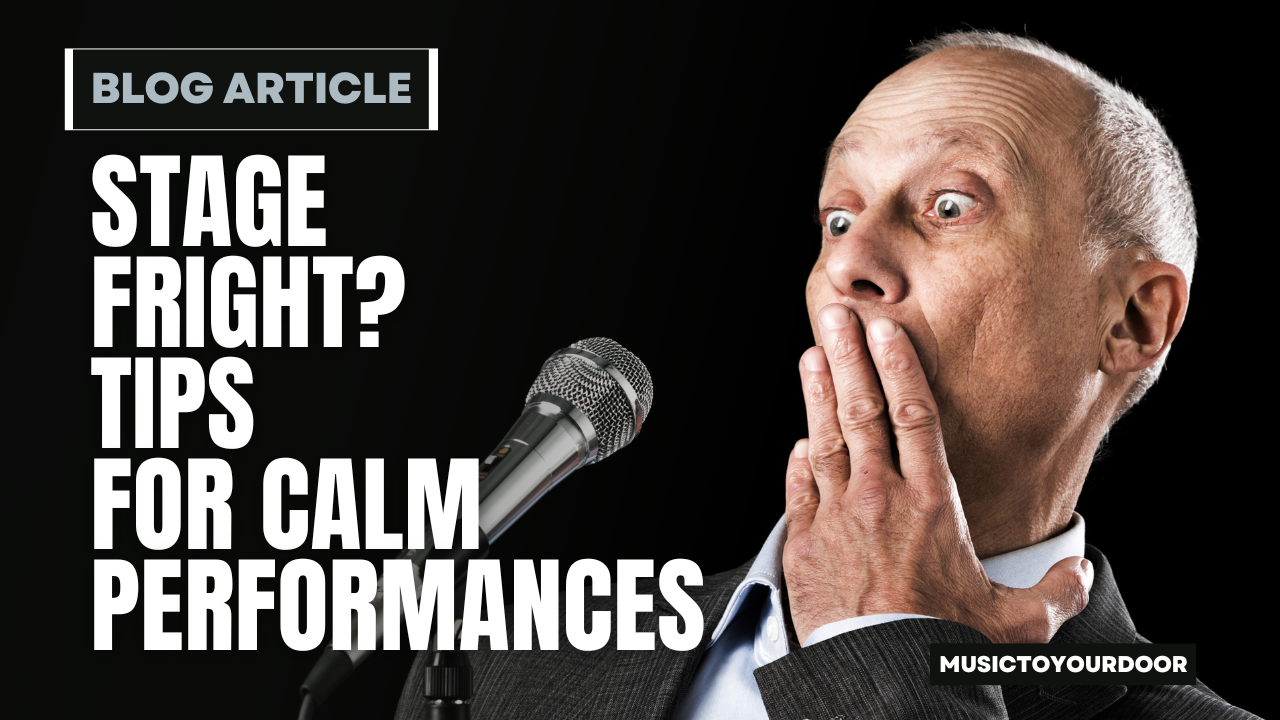Introduction
Have you ever felt your heart race, palms sweat, and mind go blank right before stepping onto a stage? You're not alone. Stage fright, also known as performance anxiety, affects musicians, speakers, and performers across Australia. But here's the good news—you can overcome stage fright and perform with confidence.
With the right calming techniques, public speaking tips, and relaxation methods, you can transform fear into excitement. Whether you're a first-time speaker or an experienced performer, this guide will provide practical, research-backed strategies to help you shine under the spotlight. Let's dive in!
Understanding Stage Fright
What Is Stage Fright and Why Does It Happen?
Stage fright is more than just nervousness—it’s a physiological response triggered by the brain’s fight-or-flight mechanism. When you're about to perform, your body interprets it as a high-stakes situation, releasing adrenaline that causes sweating, trembling, and a racing heartbeat.
In Australia, even seasoned performers like musicians in Sydney’s Opera House or keynote speakers at Melbourne conferences admit to experiencing performance anxiety. But stage fright isn’t a sign of weakness; it’s a sign that you care about delivering a great performance.
The key to overcoming stage fright lies in understanding its roots and implementing proven calming techniques to reframe nervous energy into confidence on stage.
How Stage Fright Impacts Your Performance
Performance anxiety can affect every aspect of your presentation or show. Common symptoms include:
-
Physical signs: Shaky hands, dry mouth, rapid heartbeat.
-
Mental blocks: Forgetting lines, losing focus, negative self-talk.
-
Emotional distress: Overwhelming fear, self-doubt, or panic.
For Australian stand-up comedians, theatre actors, and musicians, this anxiety can result in missed opportunities and diminished stage presence. However, by incorporating relaxation methods and public speaking tips, performers can regain control and deliver outstanding performances.
Preparing Mentally and Physically
Breathing Techniques for Relaxation
Deep breathing is one of the most effective ways to reduce performance anxiety. Try the 4-7-8 breathing technique:
-
Inhale for 4 seconds.
-
Hold your breath for 7 seconds.
-
Exhale slowly for 8 seconds.
-
Repeat 4-5 times.
This method signals your nervous system to calm down, helping you feel more grounded before stepping on stage. Australian yoga instructors frequently recommend breath control as a powerful relaxation method for managing stress and nerves.
The Role of Visualization in Performance
What if you could mentally rehearse a flawless performance? Visualization is a technique used by successful performers worldwide. Picture yourself on stage, delivering every word or note perfectly. Imagine the audience applauding, feeling the warmth of their support.
For example, Australian Olympians use visualization to prepare for competitions—why not apply the same technique to your performance? Practicing in your mind creates a sense of familiarity, making the real performance feel more natural.
Building a Pre-Performance Routine
Consistency builds confidence. Create a pre-performance routine that includes:
-
Light stretching to release tension.
-
Deep breathing exercises to calm nerves.
-
A short vocal or speech warm-up.
-
Listening to upbeat music to set a positive tone.
Australian theatre actors often swear by pre-show rituals to maintain focus. Find what works for you and make it a habit.
Tips to Stay Calm During a Performance
Focusing on Your Strengths
Instead of dwelling on what could go wrong, lean into your strengths. If you’re an engaging speaker, emphasize storytelling. If you’re a musician, channel emotion into your performance.
Legendary Australian singer-songwriter Missy Higgins once shared how she combats nerves by focusing on the joy of performing, rather than perfection. Remember—you have something valuable to offer!
Using Positive Affirmations
Words are powerful. Before your performance, repeat affirmations such as:
-
I am prepared and capable.
-
I connect with my audience effortlessly.
-
I enjoy performing and express myself confidently.
Affirmations rewire your brain to replace fear with confidence. Many Australian public speakers use this technique to deliver impactful speeches without anxiety.
Managing Unexpected Challenges
Things don’t always go as planned—microphones fail, words slip, distractions happen. Stay adaptable.
-
If you forget a line, take a pause and breathe.
-
If technical issues arise, engage with the audience casually.
-
If nerves creep in, use your calming techniques.
A great example? Australian comedian Wil Anderson has mastered improvisation, turning mishaps into comedic gold. Stay calm, keep going, and own the stage!
Long-Term Strategies to Reduce Stage Fright
Practicing in Front of Smaller Audiences
Start small and build confidence over time:
-
Rehearse in front of friends or family.
-
Join local open mic nights in Sydney or Melbourne.
-
Practice in front of a mirror to observe body language.
Over time, exposure desensitizes you to the fear of being watched, making larger audiences feel more manageable.
Seeking Professional Support or Classes
If stage fright significantly impacts your performance, consider professional help. Many Australian acting schools and public speaking courses offer training specifically to help performers build confidence on stage.
Coaching from experienced mentors can make a world of difference in conquering performance anxiety.
Success Stories: Inspiration from Australian Performers
Learning from Local Artists Who Overcame Stage Fright
Many Australian artists have struggled with stage fright before becoming icons. For example:
-
Hugh Jackman, despite his incredible acting career, admitted to experiencing nerves early on.
-
Guy Sebastian, winner of Australian Idol, worked through performance anxiety by focusing on audience connection.
-
Cate Blanchett relied on deep breathing and visualization to manage stage stress.
These success stories prove that overcoming stage fright is possible. With persistence, anyone can transform anxiety into stage confidence.
Conclusion
Stage fright doesn’t have to hold you back. With the right techniques—breathing exercises, visualization, pre-performance routines, and mindset shifts—you can turn anxiety into a powerful tool for success.
Every Australian performer, whether a singer in Sydney or a speaker in Brisbane, can develop confidence on stage. The key? Practice, preparation, and a positive mindset.
So the next time you step onto a stage, remember—you've got this!
